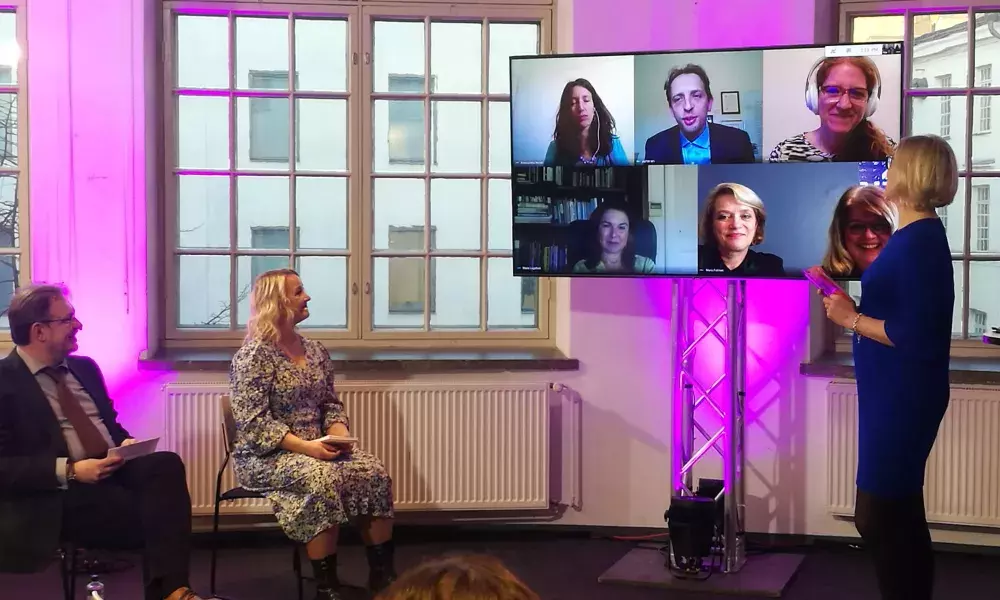Tampere hosted the ‘Keeping Cities Vital: Public Space and Resilience’ event

Bringing together experts from Athens, Helsinki, Jerusalem, New York and Tampere, the city of Tampere hosted on Thursday 26th of November the online/offline international event ‘Keeping Cities Vital: Public Space and Resilience’, liaising the initial results of the Smart Urban Security and Events Resilience (SURE) demonstration project to the emerging questions of: a) public space management b) trust and the perception of fear and security in the public domain and c) government transformation.
SURE is a 3.2 million euro pilot project taking place in Tampere, Finland, forming part of the Urban Innovative Actions (UIA) Initiative of the European Commission. It was initially conceptualised as a demonstration project for the optimisation of events planning and management in the public domain, from the perspective of urban authorities, exploring how urban security is interlinked with cities´ competitiveness, vitality and overall resilience from the practical perspective of events’ management.
Citizens, through their municipal and national governments or through their own bottom-up initiative, have put in action a diversity of mechanisms in search of solutions to improve the health crisis management while allowing for the re-emergence of public life and cultural events in particular. A critical denominator for soliving this riddle seems to be the interaction in public spaces, whether these are open-air squares and parks, or even commercial neighbourhoods but approaches differ depending on local cultural circumstances and the level of trust in institutions.
Some of these aproaches involve:
- Top down use of technology. In Israel, the city of Tel Aviv-Yafo piloted the development of ‘safe neighbourhoods’ and safe venues using a combination of rapid tests at the entrance of the designated areas and the voluntary use of a tracking app which monitors the health status of the phone-application carrier relative to COVID-19. While there were several challenges involved both including the use of data as well as behavioural tendencies and questions of trust, this pilot showcased a different potential in the use of technology in a state of public-health emergency.
- Bottom-up behavioural changes and administrative adaptability. In New York, during COVID-19 lockdown, several artists started using parks as spaces for rehearsal, discovering a new space for interaction and creativity. In addition, impromptu concerts were organised in order to help citizens cope with the lockdown while in addition the city of New York allowed for the first time outdoor dining. And while tables outdoors were normally not allowed and such concerts were typically irregular as they would require permits, there was a lot of flexibility under the crisis circumstances for bending the rules. The question therefore that emerges is what kind of new rules and regulations are needed to allow for a bounce-forward and help cultivate new ways of expression, using the crisis as an opportunity for improving urban public space management. In other words it is important, from the city perspective, to watch the citizen innovations already happening and figure out how resources can be pushed to the direction of implementation and scaling.
- City revitalisation through trust building and citizen interaction. The city of Athens, is well acquainted to crisis having managed over the last 10 years the multiple effects of a long-term financial crisis which turned socio-political, the refugee crisis of 2015, as well as the COVID-19 pandemic. Events management and district regeneration where used as two central means in order to turn the city around and support socially and economically its citizens as well as to improve its positioning as a European and global capital city. To achieve this, the city followed a triple axes strategy based on building mechanisms to facilitate citizen activity and interaction with the authorities; capitalising on international and European networks and city-to-city relations and adopting long-term strategic programs and goal setting to facilitate absorption and use of funds. This combination can be considered critical today in order to allow for the re-bouncing and potential further transformation of the public domain emphasising on the unique importance of stakeholder and individual citizen engagement on any new major planning.

KEY SURE project TAKEOUTS
- City security is not self-evident and nowadays it calls for a necessary breakdown of traditional administrative silos. SURE pilots the development of a new events coordination blue-book for urban authorities. Key steps involve the identification of the key involved actors and the appointment of selected points of contact within each entity; the integration of data-platforms for the transformation of data-gathering to usable knowledge. This is achieved through the formation or the use of existing city data monitoring centres. Tampere is piloting the use of AI technology through the NOKIA AI platform.
- When talking about public events, the sense (or perception) of security and comfort is equally important as to the actual management of threat. Soft actions, such as optimal crowd-management, understanding the balance between control and trust and demonstrating respect towards the user are necessary elements to improve the sense of security, highlighting that calm and relaxed people tend to behave more predictably.
- COVID-19 may well change both the actual way of event planning, bringing forward a combination of online and offline event planning, as well as changing peoples’ attitudes around actual events, potentially calling for flexibility in crowd tracking and management from the perspective of urban authorities.
About this resource
The Urban Innovative Actions (UIA) is a European Union initiative that provided funding to urban areas across Europe to test new and unproven solutions to urban challenges. The initiative had a total ERDF budget of €372 million for 2014-2020.
Similar content




